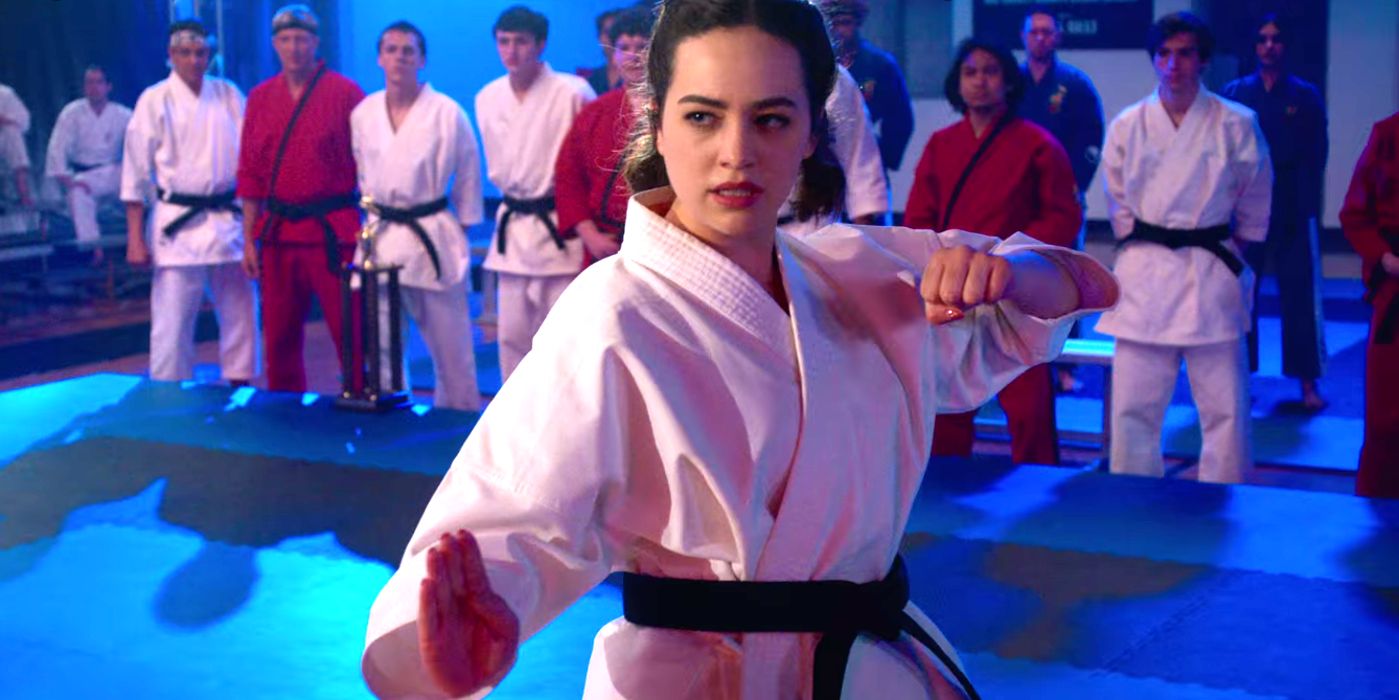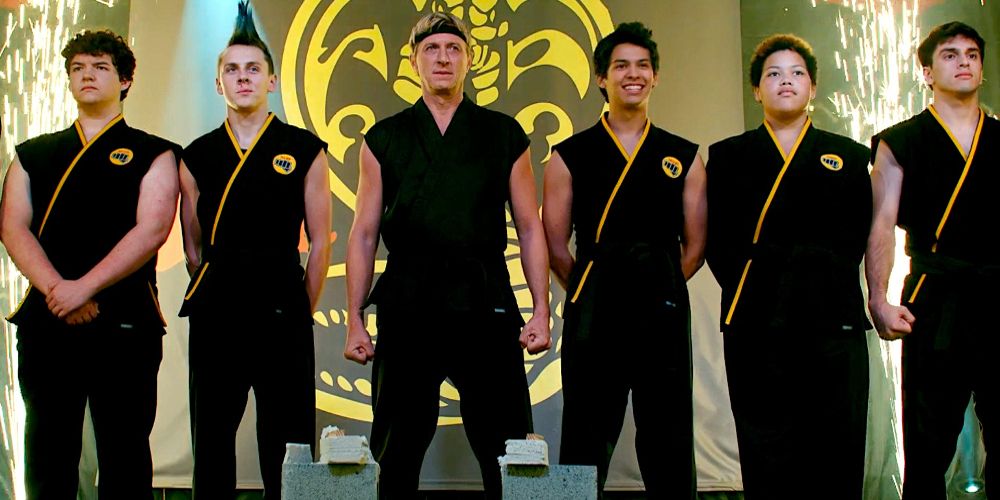
The Cobra Kai stunt team has explained how they make their stunts and fight scenes come to life while working with actors with varying martial arts skills. Cobra Kai is a Netflix original series that premiered on May 2, 2018, originally airing on Youtube's streaming service before landing a new home at Netflix. The series is a spin-off of The Karate Kid and follows Johnny Lawrence (William Zabka) and Daniel LaRusso (Ralph Macchio) 34-years after the events of the 1984 All-Valley Karate Tournament. Cobra Kai explores what happens when Lawrence attempts to bring back Cobra Kai by opening his own dojo and is soon met with resistance from LaRusso's dojo, Miyagi-Do.
Cobra Kai has many traces of the Karate Kid films' sentiments with its emphasis on karate, feuds, love triangles, and classic cars. However, the series also departs from the franchise in many ways, one being that it explores a bit darker territory as it delves into decades-long feuds and desire for vengeance. The Cobra Kai fights are notably more violent than those in Karate Kid for this reason. With uncontrolled school fights, tournament matches, and targeted attacks, the stunts and fights are vital to Cobra Kai's success.
In an interview with Backstage, Cobra Kai's stunt coordinator Ken Barefield and fight coordinator Don Lee opened up about how they make the stunts happen while working with actors of varying martial arts skills. When it comes to bringing the stunts and fights to life, it is important to focus on the actors' strengths. Lee explained that they only get a few takes to get it right, so if an actor can't perform a move 10 out of 10 times, it usually gets scrapped. Lee and Barefield train the actors, but they also choreograph to their strengths above focusing on what's visually appealing. Check out Lee's statement below:
Ken, who worked with everyone on all the seasons, has an understanding of what the actors can and can’t do. We train with them, and we choreograph to their strengths versus what may cinematically look cool. If you can’t do the move 10 out of 10 times, it’s not worth putting on film, because we don’t usually get more than two or three takes. You want to highlight what the actor can do. When you have a cast where some are more naturally talented than others and some have to work harder to get there, it’s a really cool progression to see.

The stunt team's discussion sheds some light on how the show manages fight scenes, considering that it isn't always possible to find actors and actresses who are already experienced in martial arts. Cobra Kai remedies this issue with some training behind the scenes, as well as the help of choreography. While many of the Cobra Kai characters are portrayed as having high rankings and being karate champions, very few are actually black belts behind the scenes. However, while there is a desire to pull off epic fight scenes, one needs to realize that the more difficult a stunt with an inexperienced actor is, the less realistic it will look. That is why Lee and Barefield's strategy of mixing their actors' natural strengths with choreography and training proves effective for the show.
In a show like Cobra Kai where the stunts and fight scenes make up a large portion of the content, it is important to know how to work with actors who might not have experience in martial arts. Capitalizing on actors' strengths doesn't only prove more efficient and appealing in the end, but it also ensures the actors' safety and creates less room for injury or accidents. Since it is nearly impossible to become a black belt over the course of several months of filming, it is very important that stunt and fight coordinators know how to work with varying skill levels. Cobra Kai's stunt team illustrated the significant role they play on the show and how they take actors with little experience and effectively turn them into skilled fighters onscreen.
Source: Backstage
Comments
Post a Comment